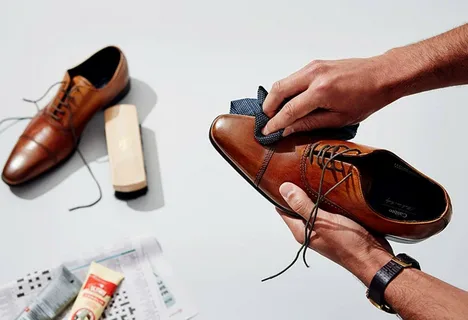
Back pain is a prevalent issue for many individuals in the workforce, especially those in desk-bound professions. Spending long hours in front of a computer, often in a static posture, can lead to stiffness and discomfort in the back, impacting productivity and overall well-being. However, back pain at work is not an inevitable fate. By understanding the causes and implementing practical solutions, it’s possible to alleviate this discomfort and even prevent its recurrence. This article aims to explore the various strategies and changes one can make in their work environment and habits to address back pain effectively.
Table of Contents
Sitting or Standing – Which ist Better?
In the quest for optimal back health in the workplace, the question often arises: is it better to sit or stand? Standing desks bring new dynamics to this debate, offering benefits that traditional sitting desks lack. One of the key advantages of a standing desk is the promotion of natural spine alignment and increased movement, which helps reduce the compression of spinal discs and the strain on back muscles typically associated with prolonged sitting. Standing also encourages more frequent shifting of positions, which enhances circulation and reduces the risk of stiffness and pain.
However, standing all day isn’t a panacea; it can lead to its own set of issues, such as fatigue and foot pain. Therefore, the optimal solution lies in a balance between sitting and standing. The ability to alternate between these positions throughout the day offers a way to enjoy the benefits of both. This combination not only helps in mitigating back pain but also contributes to overall physical health and well-being. Adopting a flexible work setup with a standing desk allows for this essential variation in posture, making it a key component in maintaining back health at work.
The Ideal Desk Setup: Ergonomics for Comfort and Productivity
Setting up the ideal desk involves careful consideration of various ergonomic parameters to ensure comfort and reduce the risk of strain. The height of the desk is a critical factor; for sitting, it should allow your arms to rest comfortably at a 90-degree angle when typing, with your shoulders relaxed. For a standing desk, the height should enable your arms to maintain that same 90-degree angle, preventing you from stooping forward or reaching up too high.
The width and depth of the desk surface also play a significant role. Ample space is necessary to avoid clutter and ensure that essential items are within easy reach. This helps in maintaining a comfortable arm distance from the computer screen, ideally about an arm’s length away, to reduce eye strain.
Adequate legroom is another essential feature, providing enough space to comfortably move your legs and change positions, whether sitting or standing. The desk should also accommodate any accessories or equipment needed, like keyboard trays or monitor stands, without compromising on space or comfort.
Ergonomic Chair: Your Spine´s Best Friend
In the realm of workplace ergonomics, the importance of selecting the right chair cannot be overstated. Often overlooked, a chair is much more than just a place to sit; it’s a crucial component in maintaining spinal health and overall well-being, especially for those who spend the majority of their workday seated. An ergonomic chair serves as your spine’s best friend, thoughtfully designed to provide support where it’s most needed and to promote a healthy posture.
Key Features of an Ergonomic Chair: A Solution to Common Back Problems
An ergonomic chair should come equipped with several key features designed to alleviate and prevent common back issues. Adjustable lumbar support is paramount in an ergonomic chair, as it provides necessary support to the lower back, helping to reduce the strain that leads to lower back pain. The height adjustability feature is equally important, ensuring users can sit with their feet flat on the floor and thighs parallel, reducing the risk of circulatory problems.
Tilt functionality in an ergonomic chair is beneficial for allowing a change in posture throughout the day. This feature helps in alleviating pressure on the spine and aids in reducing the discomfort associated with long periods of sitting. Adequate seat depth is crucial for supporting the hips and buttocks; too shallow a seat can increase pressure on the thighs, while too deep a seat can cause lower back strain.
Armrests play a significant role in providing support for the shoulders and upper back. They should be adjustable to allow the arms to rest comfortably, thereby reducing tension in the shoulders and neck area, often a source of chronic pain. A chair with a well-designed backrest that follows the natural curve of the spine can prevent mid and upper back pain.
Take a Break: The Importance of Regular Interruptions in Work
Taking regular breaks during work hours is not just beneficial; it’s essential for physical and mental well-being. Experts suggest standing up and moving away from your desk every 30 minutes to an hour. This routine helps in reducing the physical strain of prolonged sitting and refreshes the mind. Short, frequent breaks are more effective than fewer, longer ones, as they help maintain consistent productivity and focus.
Breaking up long periods of sedentary behavior has been shown to reduce the risk of back pain, improve circulation, and even boost creativity. Even something as simple as standing, stretching, or walking to get a glass of water can make a significant difference. It’s not just about the physical movement; these breaks also provide mental respite, allowing you to return to your tasks with renewed energy and a fresh perspective.
Quick and Easy Office Exercises for Back Relief
Chair squats can be done by standing up from your chair and lowering your body back down, halting just before you sit, which strengthens the legs and core to support the lower back. Seated leg lifts involve sitting and straightening one or both legs, holding them up for a few seconds, then lowering them back down without letting the feet touch the floor, engaging the core and promoting lower back health. Desk push-ups are performed by standing a few feet from your desk, placing your hands on the edge shoulder-width apart, and doing push-ups, strengthening the upper body and reducing upper back strain. Torso twists can be done while seated by placing your right hand on the back of your chair, twisting to the right, holding, then repeating on the left, alleviating back tension and improving spinal flexibility.






